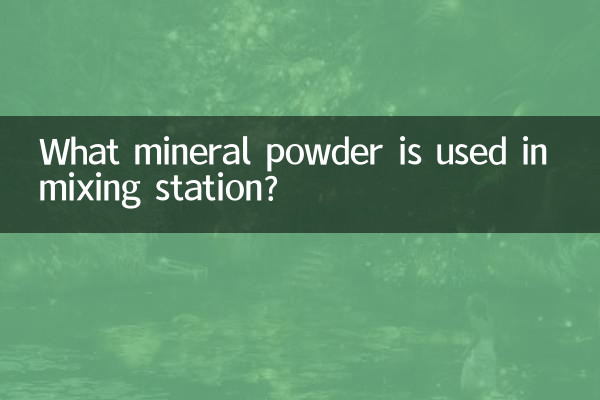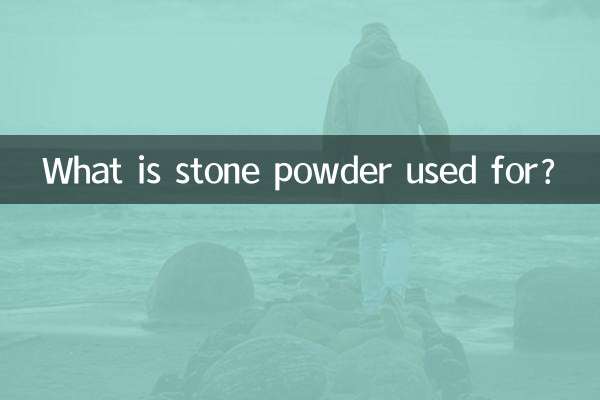What kind of mineral powder is used in mixing stations: analysis of hot topics across the Internet and data interpretation
In recent years, with the rapid development of the construction industry, the demand for mineral powder in mixing stations is increasing. Mineral powder is an important admixture of concrete, and its performance directly affects the quality and construction effect of concrete. This article will combine the hot topics and hot content on the Internet in the past 10 days, analyze the types of mineral powder commonly used in mixing stations and their characteristics, and provide structured data for reference.
1. Commonly used types of mineral powder in mixing stations

Commonly used mineral powders in mixing stations mainly include the following types:
| Mineral powder type | Main ingredients | Features | Applicable scenarios |
|---|---|---|---|
| Slag powder | blast furnace slag | High activity, can improve the strength of concrete | High-strength concrete, mass concrete |
| fly ash | Coal-fired power plant by-products | Improve workability and reduce heat of hydration | Ordinary concrete, projects with high durability requirements |
| Silica fume | Ferrosilicon alloy by-products | Fine particles fill pores and improve density | High performance concrete, anti-seepage engineering |
| limestone powder | Limestone finely ground | Low cost, improved workability | Ordinary concrete, low-cost projects |
2. Analysis of hot topics across the entire network
According to the entire network data in the past 10 days, the hot topics about "mixing station mineral powder" mainly focus on the following aspects:
1.Upgraded environmental protection requirements: Many places have introduced policies to restrict the use of highly polluting mineral powders and promote the research, development and application of green mineral powders.
2.Ore powder price fluctuations: Affected by raw materials and market supply and demand, the prices of slag powder and fly ash have increased regionally.
3.New technology application: Nano mineral powder and composite mineral powder have become hot spots in the industry and are expected to improve concrete performance and construction efficiency.
3. Comparison of mineral powder performance
The following is the performance comparison data of several common mineral powders:
| Performance indicators | Slag powder | fly ash | Silica fume | limestone powder |
|---|---|---|---|---|
| Specific surface area (m²/kg) | 400-600 | 300-500 | 15000-20000 | 200-400 |
| Activity index (%) | 95-105 | 70-90 | 110-130 | 60-80 |
| Water demand ratio (%) | 95-100 | 90-95 | 110-130 | 100-105 |
| Market price (yuan/ton) | 200-300 | 150-250 | 800-1200 | 100-200 |
4. How to choose suitable mineral powder
When selecting mineral powder for a mixing station, the following factors need to be considered:
1.Engineering requirements: Select appropriate active mineral powder according to concrete strength, durability and other requirements.
2.cost control: On the premise of satisfying performance, give priority to mineral powder with high cost performance.
3.Environmental protection policy: Pay attention to local environmental regulations and avoid using restricted or highly polluting mineral powders.
4.supply stability: Ensure a stable source of mineral powder and avoid interruption of production schedule due to supply interruption.
5. Future Trend Outlook
As the construction industry's requirements for concrete performance increase and environmental protection policies tighten, the mineral powder market will show the following trends:
1.The rise of composite mineral powder: The compound use of various mineral powders will become the mainstream to take into account both performance and economy.
2.Green mineral powder research and development: Low energy consumption and low emission mineral powder production technology will receive attention.
3.Intelligent application: Ore powder quality inspection and blending will rely more on intelligence and big data technology.
Through the above analysis, the mixing station can select appropriate mineral powder according to its own needs, while paying attention to industry trends and technological development to improve concrete quality and market competitiveness.

check the details

check the details